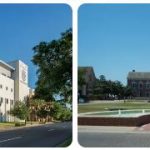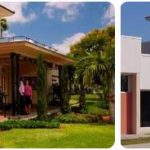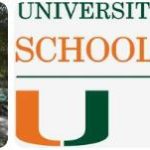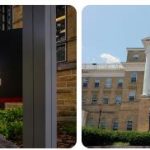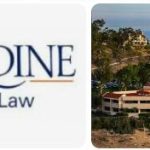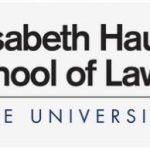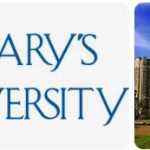Seattle University School of Law was founded in 1972 as the only private law school in the Seattle area. Previously, there had been no law school in Seattle since 1886. The new law school was part of Seattle University’s commitment to providing a quality legal education to its students. Initially, the law school operated out of leased space at the University of Washington but moved to its current location on First Hill in 1979. Since then, the School has grown from an initial enrollment of just over 200 students to more than 800 today. The curriculum has also evolved over time, with a focus on practical skills training and experiential learning opportunities that prepare students for success in the legal profession. In addition, the School has developed strong international programs, with exchange agreements with universities around the world and an emphasis on global legal issues. Throughout its history, Seattle University School of Law has remained committed to educating excellent lawyers who are prepared to serve their communities and make a positive impact on society.
Seattle University School of Law is located in the state of Washington. As one of the leading law programs, Seattle University School of Law has a high average LSAT score of 155-160 when recruiting new students. As a return, the median starting salary for law graduates reaches $75,000 per year. See the following table for detailed admissions information and career profiles of Seattle University School of Law.
Admissions: Seattle University
Seattle University School of Law’s admissions statistics are quite impressive. The school had an acceptance rate of 77% in 2019, with 1,717 applicants vying for admission. Of those accepted, 649 students enrolled in the fall of 2019. The median LSAT score for accepted students was 158, and the median undergraduate GPA was 3.5. Additionally, the 25th and 75th percentile LSAT scores were 153 and 162 respectively. For undergraduate GPA, the 25th and 75th percentile GPAs were 3.2 and 3.8 respectively.
The diversity of the student body is also noteworthy; approximately 40% of students are from minority backgrounds or identify as a member of a historically underrepresented group in law school education such as LGBTQIA+. Seattle University School of Law is also one of the few law schools that offers a dual-degree program with a Master’s in Social Work (MSW) which provides an excellent opportunity for those interested in social justice advocacy to pursue both degrees at once while taking advantage of the unique curriculum offered by each program separately.
| Fall 2019 Admissions and Enrollment Statistics | |
|---|---|
| Total number of full- and part-time applicants | 2,626 |
| Total number of full- and part-time acceptances | 998 |
| Overall acceptance rate | 38.0% |
| Total number of full- and part-time first-year students enrolled | 332 |
| Number of full-time program applicants | 2,374 |
| Number of full-time program acceptances | 895 |
| Full-time acceptance rate | 37.7% |
| Number of first-year full-time students enrolled | 268 |
| Number of part-time program applicants | 252 |
| Number of part-time program acceptances | 103 |
| Part-time acceptance rate | 40.9% |
| Number of first-year part-time students enrolled | 64 |
| Fall 2019 GPA and LSAT Scores | |
| 25th-75th percentile GPA scores for all students | 3.15-3.63 |
| 25th-75th percentile LSAT scores for all students | 155-160 |
| 25th-75th percentile undergraduate GPA for full-time students | 3.16-3.63 |
| 25th-75th percentile LSAT scores for full-time students | 155-160 |
| 25th-75th percentile undergraduate GPA for part-time students | 2.99-3.55 |
| 25th-75th percentile LSAT scores for part-time students | 153-159 |
Careers: Seattle University
| Bar Statistics (Winter and Summer 2018 administrations) | |
|---|---|
| State where the greatest number of first-time test takers took the bar | WA |
| School’s bar passage rate for first-time test takers | 79.0% |
| Statewide bar passage rate for first-time test takers | 74.1% |
| Class of 2018 Graduates | |
| Total graduates | 362 |
| Graduates employed at graduation | 59.1% |
| Graduates known to be employed nine months after graduation | 96.6% |
| Starting Salaries of 2018 Graduates Employed Full-time | |
| 25th percentile private sector starting salary | $59,742 |
| Median private sector starting salary | $75,000 |
| 75th percentile private sector starting salary | $100,000 |
| Percent in the private sector who reported salary information | 32% |
| Median public service starting salary | $48,925 |
| Areas of Legal Practice (Class of 2018) | |
| Percent employed in academia | 1.0% |
| Percent employed in business and industry | 30.0% |
| Percent employed in government | 12.0% |
| Percent employed in all judicial clerkships | 7.0% |
| Percent employed in law firms | 45.0% |
| Percent employed in public interest | 5.0% |
| Percent employed in an unknown field | 0.0% |
| Percent employed in a judicial clerkship by an Article III federal judge | 1.0% |
| 2018 Graduates Employment Location | |
| Graduates employed in-state | 84% |
| Graduates employed in foreign countries | 1% |
| Number of states where graduates are employed | 20 |
| New England (CT, ME, MA, NH, RI, VT) | 0.0% |
| Middle Atlantic (NY, NJ, PA) | 0.6% |
| East North Central (IL, IN, MI, OH, WI) | 1.2% |
| West North Central (IA, KS, MN, MO, NE, ND, SD) | 0.3% |
| South Atlantic (DE, DC, FL, GA, MD, NC, SC, VA, WV) | 2.2% |
| East South Central (AL, KY, MS, TN) | 0.0% |
| West South Central (AR, LA, OK, TX) | 0.6% |
| Pacific (AK, CA, HI, OR, WA) | 91.6% |
| Mountain (AZ, CO, ID, MT, NV, NM, UT, WY) | 2.5% |
| Employment location unknown | 0.0% |
| Career Services | |
| (Data appear as originally submitted by this school) | |
| Career services operations | The Center for Professional Development is staffed by four professionals with diverse legal backgrounds, and offers individual counseling to help students identify curricular and career options, assistance with resume and cover-letter writing and interviewing techniques, and programs, career panels, and job fairs to help students understand how the job search and career development processes work. |
| Job Type | |
| Bar admission required or anticipated (e.g., attorney and corporate counsel positions, law clerks, judicial clerks) | 66.0% |
| J.D. preferred, law degree enhances position (e.g., corporate contracts administrator, alternative dispute resolution specialist, government regulatory analyst, FBI special agent) | 16.0% |
| Professional/other (jobs that require professional skills or training but for which a J.D. is neither preferred nor particularly applicable; e.g., accountant, teacher, business manager, nurse) | 16.0% |
| Nonprofessional/other (job that does not require any professional skills or training or is taken on a temporary basis and not viewed as part of a career path) | 2.0% |

